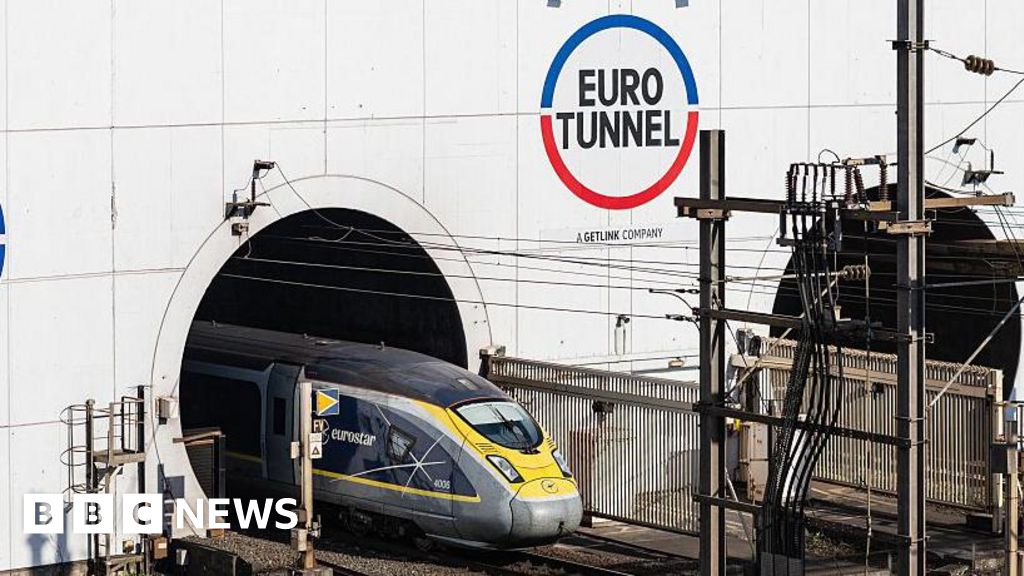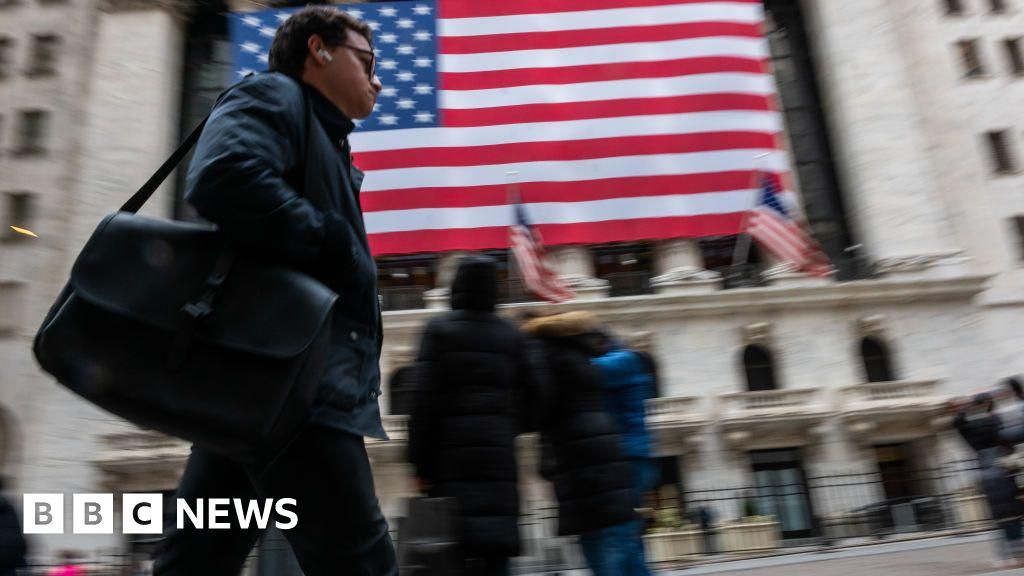Business
Dr Martens to raise prices in the US because of tariff hit

Dr Martens has announced plans to raise prices in the US from January to offset a multimillion-pound hit from higher tariffs.
The footwear retailer had previously pledged to keep prices on hold in 2025 despite high tariffs, but said it would need to make increases from the start of 2026 on “selected products” in the US only.
It makes the bulk of its footwear in Vietnam and almost a third in neighbouring Laos, which have been hit with higher tariffs because of US President Donald Trump’s trade war.
Dr Martens said it now expects a “high single digit” million-pound impact from tariffs on full-year profits, of which roughly half can be offset in 2025-26 because of the timing of action being taken.
Ije Nwokorie, chief executive of Dr Martens, told the PA news agency: “Now that the tariffs are firm and and we know how the market is responding to it, we are looking at increasing prices in the States.”
But he said the price rises were “by no means across the board” and would be in the US market only.
He said the group would not need to increase prices on the back of tariffs elsewhere globally, and confirmed it had no plans to raise prices in the UK.
Dr Martens said it remained on track with full-year forecasts, for between £53 million to £60 million underlying pre-tax profits, although it said this did not include the tariff hit.
Shares in the firm fell 9% in Thursday trading.
The group, whose yellow-stitched boots have been a retro mainstay for decades, said it plans to fully offset the extra tariff costs from 2026-27 onwards.
It said: “This aim has driven both the actions we have taken and the timing of those actions.
“We expect to fully mitigate the impact of increased tariffs for 2026-27 and beyond through continued tight cost control, flexible product sourcing, and targeted adjustments to our USA pricing policy.”
While the firm plans to keep sourcing from its existing South East Asia partners, Mr Nwokorie said the group would look to lessen the tariff blow by shifting more orders from Vietnam to the US, where tariffs are 20%, versus 40% for Laos.
It will increasingly use Laos for other markets outside of the US, he said.
Dr Marten’s half-year results on Thursday showed Dr Martens narrowed pre-tax losses to £11 million for the six months to September 28 from losses of £12.3 million a year earlier.
Sales rose 0.8% on a constant currency basis to £327.3 million in the first half as Dr Martens praised its “consumer first” strategy.
Mr Nwokorie said: “Our brand is strong, as evidenced by the 33% increase in shoes volumes and the successful launch of new products such as the Zebzag Laceless boot and the 1460 Rain boot.
“While it’s still early days, we are happy with the advances we’re making and are seeing green shoots.
“While the marketplace remains uncertain and consumers are cautious, and our biggest trading weeks are ahead, we are confident in our plans for the year.”
The group also said sales of shoes had overtaken boots for the first time in the first half, driven by demand for its Adrian tassel loafer, which saw sales growth of 24%, and its Adrian Black Polished Smooth shoe design, which was the number two bestseller.
Business
Channel Tunnel says UK investment ‘non-viable’ as it halts projects

Eurotunnel, the operator of the Channel Tunnel, has halted its UK projects, claiming “unsustainable” levels of taxation has made any future investments “non-viable”.
The company said it had been informed its business rates would increase by some 200% from next year.
It hit out at the government, arguing that the higher costs were “clearly contrary” to ambitions of growing the economy and increasing investment.
The Treasury said it would support firms “hit hardest” by tax hikes and would continue talks with affected industries over such concerns.
The outburst from Eurotunnel comes days ahead of next week’s Autumn Budget, where Chancellor Rachel Reeves will set out the government’s tax and spending plans.
Speaking to the BBC, Eurotunnel’s chief executive Yann Leriche said: “All our investments, all our plans are becoming unsustainable.
“As you know, business rates, it’s a property tax. And our property – the Channel Tunnel – has not changed. It’s still the same tunnel, the same terminal, the same trains. Everything is equal.
“And so to face such an increase… is a real issue for us. Because we know in rail, we invest for the long term.”
The potential 200% increase in business rates for Eurotunnel is a result of new calculations by the Valuation Office Agency (VOA), which provides the government with valuations and property advice used in setting taxation and benefits.
Mr Leriche said while discussions were ongoing, this could see its business rates rising from £22m to £65m.
A spokesperson for Eurotunnel said such a hike in business rates, along with other taxes, could put its total tax level at about 75% on UK earnings.
The VOA told the BBC the body “does not determine business rates” and that “next year’s liability has not yet been confirmed”.
“This unparalleled and unsustainable level of taxation makes any future investment in the UK non-viable,” the Channel Tunnel said.
“It is therefore impossible to develop new services, create jobs, and pursue what is needed for the long-term development of our activities.”
The company claimed it had “no other choice but to freeze our future investments in railway assets in the UK, starting in 2026”.
The BBC has asked Eurotunnel what investments it has frozen. The Financial Times reported that its chief executive, Yann Leriche, told the newspaper it had scrapped plans to reopen a freight terminal in Barking and to run a new direct freight service from Lille.
The Channel Tunnel is an undersea tunnel linking southern England and northern France. Nicknamed “Chunnel”, it comprises three tunnels, two rail tunnels used for freight and passenger trains, and a service tunnel.
The link between Folkestone and Calais is operated by Eurotunnel.
Separate company Eurostar, Eurotunnel’s biggest customer, operates passenger services through the tunnel between London and a number of other European cities on the continent, including Paris, Brussels and Amsterdam.
A VOA spokesperson told the BBC it had engaged with Eurotunnel and their advisers “on multiple occasions over the past eighteen months to discuss their valuation and fully explain our approach”.
“These discussions remain ongoing, and we are committed to continuing constructive engagement.”
The spokesperson added Eurotunnel could formally challenge the valuation.
Ahead of the Budget, the Eurotunnel called on the government to “provide certainty on business rates”.
The firm has not been alone in issuing warnings to the chancellor, with supermarket bosses claiming part of the government’s business rates reforms posed a problem for its industry.
Business rates are a tax on non-domestic properties such as shops, pubs and offices.
It is expected that Reeves will confirm the rates businesses will have to pay at in the Budget, along with further details, which will come into force in April 2026.
The Treasury said in response to Eurotunnel’s comments that it did not comment on “speculation around future changes to tax policy”.
It said once it understood the “complete” revaluation picture, it would be in a position to “make final decisions” on support.
Business
Number of young people not in work, education or training ‘a scandal’ – minister

It is “an absolute scandal” that the number of young people not in employment, education or training is close to a million, a minister has said.
The number of so-called “neets” aged 16 to 24 remains more than 940,000, latest Office for National Statistics figures showed on Thursday, which skills minister Baroness Jacqui Smith described as “a waste of young lives”.
Speaking to the PA news agency as she visited Mulberry University Technical College (UTC) in east London, Baroness Smith said: “It’s absolutely shocking that we have young people who, at the very start of their working life are not learning, and they’re not earning.
“That is an enormous waste of talent, and really an outrage that young people are being left in that position.
“But it’s also a waste for the future of the country because when you start not in employment or learning, it’s going to be much more difficult for you to get into work later.”
She said the Government is “absolutely focused” on how it can “turn this around” citing the youth guarantee, which is set to ensure 18 to 21-year-olds have access to education, training, an apprenticeship or ultimately guaranteed paid work if they cannot find a job.
“We’re absolutely serious that it is an absolute scandal,” Baroness Smith said.
“It’s a waste of young lives.”
Baroness Smith was shown around the UTC, for students aged 14 to 19, which specialises in technical subjects.
She said making sure that there are “the sorts of courses that will attract young people”, like the ones at the UTC, is one way the Government will bring down the number of neets.
“We’re developing youth hubs, for example, that bring together all of the services, the employment support, but also perhaps mental health support, wellbeing, helping young people with careers advice and guidance,” she added.
“We’re putting them into the places where young people are more likely to go – sports clubs, libraries, community areas – so bringing together that range of support for young people to get into work.”
The trust which Mulberry UTC is part of partners with Mercedes-Benz Grand Prix to deliver a programme offering students extra-curricular activities in science, technology, engineering and maths (Stem).
Asked whether the Government is incentivising other companies to help get more young people into education, employment or training, Baroness Smith said: “There’s every incentive for the sorts of partners that we’ve seen here at the UTC so Mercedes, the National Theatre, to work with schools and colleges, because you’re giving something to young people but what you’re doing is you’re providing a pipeline of future employees.
“So what we find, for example, in T-levels, and I’ve seen T-levels in creative media, what you see in those subjects is where young people get to have an industrial placement with an employer.
“They get a fantastic amount out of it, but the employer also gets to see the type of young people who they’ll then potentially be able to employ or to give apprenticeships to in the future.”
Business
US adds more jobs than expected in September

Natalie ShermanBusiness reporter
 Getty Images
Getty ImagesThe first official data in weeks on the US job market is out, and it showed a surprising pick-up in hiring after a lacklustre summer.
Employers added 119,000 jobs in September, more than double what many analysts had expected, but the unemployment rate ticked up from 4.3% to 4.4%, the Labor Department figures showed.
The US government shutdown, which ended last week after more than a month, had delayed publication of the figures for nearly seven weeks, leaving policymakers guessing about the state of the job market at a delicate moment.
Job growth has still barely budged since April, raising pressure on the central bank to cut interest rates to support the economy.
But policymakers at the US central bank, the Federal Reserve, have been divided about the need for further interest rate cuts. In addition to the health of the job market, they are also monitoring price inflation that ticked up to 3% in September, above the 2% rate the bank wants to see.
Looming over the debate are questions like whether artificial intelligence (AI) will dampen demand for workers over the long term and how a crackdown on immigration is changing labour supply and demand.
Businesses are also wrestling with cutbacks to government spending, new tariff costs and uncertain consumer demand.
A private report this month by outplacement firm Challenger, Gray & Christmas found the number of job cuts in October hit the highest number for the month since 2003, as high-profile companies including Amazon, Target and UPS announced reductions.
On Thursday, telecoms giant Verizon also said it was cutting more than 13,000 jobs, citing in part “changes in technology and in the economy” for the move.
The announcements have raised concerns about cracks in what has been seen as a “low-hire, low-fire” job market.
But evidence of wider deterioration has been elusive, as claims for unemployment benefits remain stable.
Health care firms, restaurants and bars led the job gains in September, while transportation and warehousing firms, manufacturers and the government shed jobs.
“The September jobs report may be backward looking but offers reassurance that the labour market wasn’t crumbling before the government shutdown,” said Nancy Vanden Houten, lead economist at Oxford Economics.
However, she noted noting that the data from October is likely to be weaker, due to government layoffs.
Limited hiring has already prompted the ranks of people without work more than six months to swell this year, though their numbers dipped a bit in September.
Unusually, the strains have been particularly pronounced among those with college degrees. The unemployment rate for that group rose to 2.8% in September, up from from 2.3% a year earlier.
“It’s been pretty challenging,” said Mason Leposavic, who has applied to thousands of jobs since graduating in May 2024 from the Rochester Institute of Technology.
 Mason Leposavic
Mason LeposavicWhile the 24-year-old did eventually find part-time work as a bartender, he has failed to find the kind of office role he hoped for in sales, tech or similar sectors.
He said the search had been dispiriting – especially when he saw firms repeatedly re-post openings he had been rejected from for lack of experience – and he was not optimistic it would improve soon.
He is now without work again after switching states to move back in with his mother in Arizona in an attempt to save money.
“I didn’t realise how hard it would be,” he said. “I think everything really changed after AI, especially in the tech industry.”
Information about the situation has been clouded by the government shutdown, which has limited incoming economic data in recent weeks.
Thursday’s report is the last official release on the job market before the Fed’s next meeting in December.
While September’s job gains were stronger than expected, the report also showed job growth in July and August was lower than previously estimated. The US added just 72,000 jobs in July and shed 4,000 positions in August.
The Bureau of Labor Statistics will publish its next report on the November job market in mid-December, leaving a gap in some data for October.
Analysts said the inconclusive nature of the latest figures was likely to bolster the case for the Fed to move cautiously and hold off on cutting in December.
“The Federal Reserve is still driving in a fog,” said Art Hogan, chief market strategist for B Riley Wealth. “As Chair Powell said – ‘When you are driving in a fog, you slow down.'”
Executives from companies such as McDonald’s, Coca-Cola and Chipotle have warned in recent weeks that lower-income households are tightening spending as rising prices put pressure on their budgets and confidence in the job market sinks.
But a strong stock market, bolstered by upbeat reports from many companies, has helped to sustain higher earners.
The Fed has cut its key interest rate twice since September, leaving it in a range of 3.75%-4%, its lowest level in three years.
But Fed chairman Jerome Powell warned last month that another reduction was “far from” a foregone conclusion in December.
At the time he offered reassurance about the job market, saying the mix of data suggested “that you’re seeing maybe continued very gradual cooling, but nothing more than that”.
-

 Tech5 days ago
Tech5 days agoNew carbon capture method uses water and pressure to remove CO₂ from emissions at half current costs
-

 Politics7 days ago
Politics7 days agoBritish-Pakistani honoured for transforming UK halal meat industry
-

 Business5 days ago
Business5 days agoThese 9 Common Money Mistakes Are Eating Your Income
-

 Sports5 days ago
Sports5 days agoTexas A&M officer scolds South Carolina wide receiver after touchdown; department speaks out
-

 Business6 days ago
Business6 days agoWhat’s behind Rachel Reeves’s hokey cokey on income tax rises?
-

 Sports6 days ago
Sports6 days agoApple scrapping MLS Season Pass service in ’26
-

 Fashion6 days ago
Fashion6 days agoAfter London, Leeds and Newcastle, next stop Glasgow for busy Omnes
-

 Tech7 days ago
Tech7 days ago$25 Off Exclusive Blue Apron Coupon for November 2025







